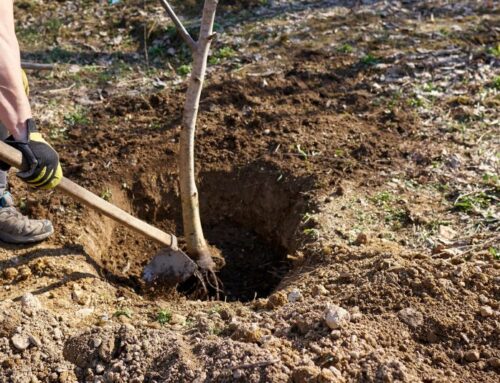As winter blankets the landscape in a quilt of frost and snow, most deciduous trees shed their leaves, creating barren silhouettes against the cold sky. However, a handful of trees defy this seasonal norm, proudly displaying their foliage throughout the winter months. The mystery of why some trees retain their leaves throughout winter has captivated the curiosity of nature enthusiasts and scientists alike. In this article, we explore the world of deciduous trees, deciphering the purpose of leaves, understanding the reasons behind leaf shedding, and unraveling why some trees choose to hold onto their winter leafy wardrobe.
What does a leaf do?
Before we unravel the winter enigma, it’s important to understand why trees produce leaves in the first place. Leaves are the powerhouses of plants, conducting the process of photosynthesis and transforming sunlight, carbon dioxide, and water into sugars and oxygen. The green pigment chlorophyll, found in the chloroplasts of leaf cells, captures sunlight and converts it into chemical energy. This energy powers the production of glucose, the fuel that sustains the tree’s growth, development, reproduction, and health.
Beyond photosynthesis, leaves also act as lungs for the tree. Through tiny pores called stomata, leaves absorb carbon dioxide from the air and release oxygen, contributing to the oxygen and carbon cycles in the atmosphere. Moreover, leaves serve as an environmental sensor, monitoring changes in light, temperature, and moisture, and signaling appropriate responses.
Why Do Trees Lose Their Leaves?
As autumn unfolds, the landscape turns into a canvas of warm reds, oranges, and yellows as deciduous trees prepare for the winter chill. The phenomenon of leaf shedding, scientifically known as abscission, is a survival strategy. As daylight hours shorten and temperatures drop, trees sense the changing seasons. The decreasing sunlight triggers a reduction in chlorophyll production, unmasking the underlying pigments responsible for vibrant fall colors.
At the same time, trees start undergoing a process to shed their leaves. A layer of cells, known as the abscission zone, form at the base of each leaf stem. This layer weakens the connection between the leaf and the tree, leading to leaf detachment and drop. As the days grow shorter and temperatures continue to decline, trees conserve energy by shedding leaves, which prevents excessive water loss through transpiration and minimizes the risk of damage from winter storms.

But What About Trees That Don’t Lose Their Leaves in Winter?
While most deciduous trees go dormant, shedding their leaves to survive winter, a different group of trees uses a different strategy. These evergreen trees, such as pine, spruce, and cedar, retain their leaves, or needles, throughout the year. However, our focus here is on the deciduous trees that defy the norm and persist with their leaves during winter, a phenomenon called marcescence.
One notable example is the oak tree, particularly the species known as the pin oak (Quercus palustris). The pin oak retains its distinctive, pin-shaped leaves well into winter, creating a remarkable contrast to its leafless counterparts. Similarly, the beech tree (Fagus grandifolia) often holds onto its bronze-hued leaves through the winter gloom.
Is There Any Benefit to Keeping Leaves?
The phenomenon of marcescence in certain deciduous trees may seem counterintuitive, but there are potential benefits to maintaining their leaves.
- Winter Photosynthesis: While the rate of photosynthesis significantly decreases during winter due to reduced sunlight, some evergreen trees and certain deciduous trees with persistent leaves can continue this process. Though activity is limited, any production of sugars helps give the tree an energy boost during the dormant season.
- Nutrient Recycling: Trees that keep their leaves through winter engage in a form of nutrient recycling. Instead of shedding their leaves and allowing them to decompose on the forest floor, these trees reabsorb valuable nutrients from the leaves before they fall. This internal recycling mechanism enhances the tree’s nutrient efficiency.
- Habitat and Aesthetic Appeal: Trees that maintain their leaves in winter contribute to the diversity of habitats and landscapes. The evergreen foliage provides shelter and food for wildlife during the colder months. Plus, the visual contrast created by these trees adds aesthetic appeal to winter landscapes, breaking the monotony of bare branches and white snow.
The decision of certain deciduous trees to retain their leaves through winter is a fascinating example of nature’s adaptive strategies for survival. Beyond the aesthetic allure of a splash of color and texture in the winter bleakness, these trees represent the resilience and versatility of woody plants. By diving into the mechanisms of leaf retention, we uncover a story of survival, resource conservation, and the perpetual fight for life that persists even in the harshest of seasons.
Schedule Your Winter Tree Care
As the chilly winds start to blow and the leaves begin to fall, it’s time to think about the well-being of your trees. Winter can be a tough season for your green friends, but with A Plus Tree’s expert tree health care services, you can rest assured that your trees are in good hands.





